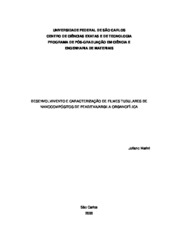Desenvolvimento e caracterização de filmes tubulares de nanocompósitos de PEAD/EVA/argila organofílica
Abstract
In this work, the use of ethylene-vinyl acetate copolymer (EVA) in substitution to compatibility agents normally employed in the production of high density polyethylene (HDPE) nanocomposites (such as polyethylene grafted with maleic anhydride - PEMA) was evaluated due to its intrinsic polarity and relative low cost. Two EVAs with different melt flow indexes and vinyl acetate contents and two organophilic clays treated with different organic surfactants were used. It was verified that EVA with lower viscosity and higher polarity showed better interactions with the clay treated organically with polar surfactant. However, these characteristics reduced the HDPE/EVA compatibility. HDPE/EVA/MMT nanocomposites were obtained through melt mixing and subsequently blown as films. An Intercalated nanocomposite (HDPE/EVA 8/C15A) and a nanocomposite characterized by the presence of tactoids of the organoclay (HDPE/EVA 25/C30B) were produced. From rheological, morphological and permeation analysis it was found that the addition of clay modified the interfacial interactions between HDPE and EVA, increasing the system compatibility when compared to the HDPE/EVA blends behavior. Comparing with the HDPE/EVA blends, the better compatibility in nanocomposites were followed by an increase in elastic modulus, yielding and rupture behaviors and permeability properties. But these properties did not increase when compared with the pure HDPE film. The best results were obtained with the HDPE/EVA 8/C15A nanocomposite.
